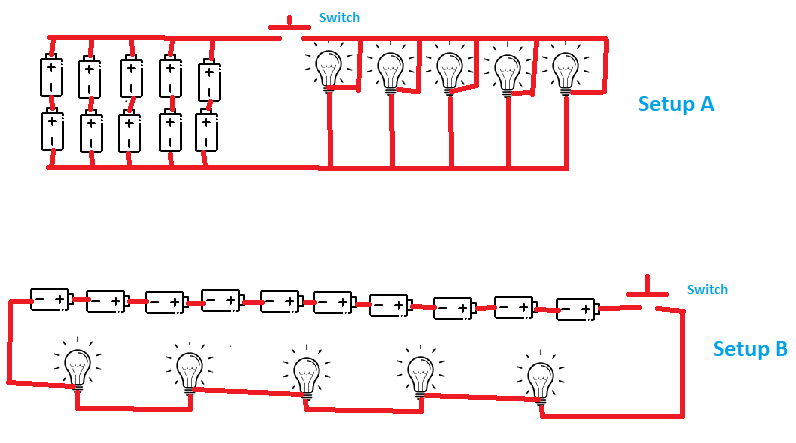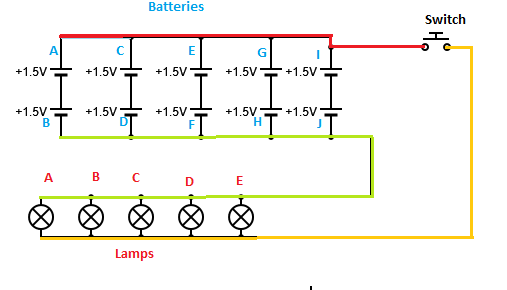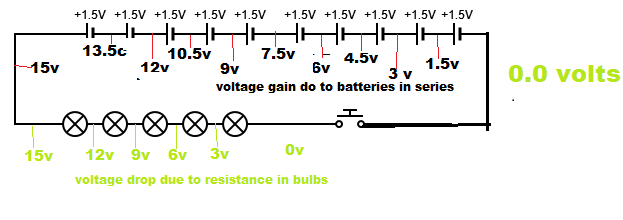Inspired by daily challenges #1

Georg is making use of 10 “D” cell batteries and 5 incandescent flashlight bulbs in a project he is designing. His project requires that he can control all 5 bulbs with a single pole switch that he has. The bulbs that he is using where intended to be used with two batteries in series. Georg has found that if he connects 3 of his batteries and one of the bulbs in series that bulb will immediately burn out when the switch is closed. Georg is considering two possible arrangements of the components in his setup which are shown in drawing above.
Which of statements given are true?
Givens and assumptions:
- The batteries are all good and very similar to each other.
- The bulbs are all good and very similar to each other.
- All the connecting hardware (connecting point, conductors, switch, ext.) have negligible resistances.
This section requires Javascript.
You are seeing this because something didn't load right. We suggest you, (a) try
refreshing the page, (b) enabling javascript if it is disabled on your browser and,
finally, (c)
loading the
non-javascript version of this page
. We're sorry about the hassle.


Let the voltage of a D-cell battery be V V , the resistance of a bulb be R Ω Then the rated current of each bulb is I r = R 2 V A at the rated temperature and the bulb would burn out if the current through it is I b = R 3 V A = 1 . 5 I r .
The equivalent circuit of the two setup is as shown above.
Setup A: The circuit of 5 × 2 D-cell batteries in parellel with 5 bulbs is equivalent to a 2 D-cell battery in series with a bulb. That is V b = 2 V and R b = R and hence the current through the bulb is I b = R b V b = R 2 V = I r < 1 . 5 I r . So the bulb would not burn out.
Setup B: For 10 D-cell batteries connected in series, V b = 1 0 V V . The 5 bulbs in series make R b = 5 R Ω . And hence the current through the bulb is I b = R b V b = 5 R 1 0 V = I r < 1 . 5 I r . So the bulb would not burn out.
We note that the 5 bulbs in Setup B have the same current as the 5 in Setup A, therefore "A" and "B" produce the same amount of light .